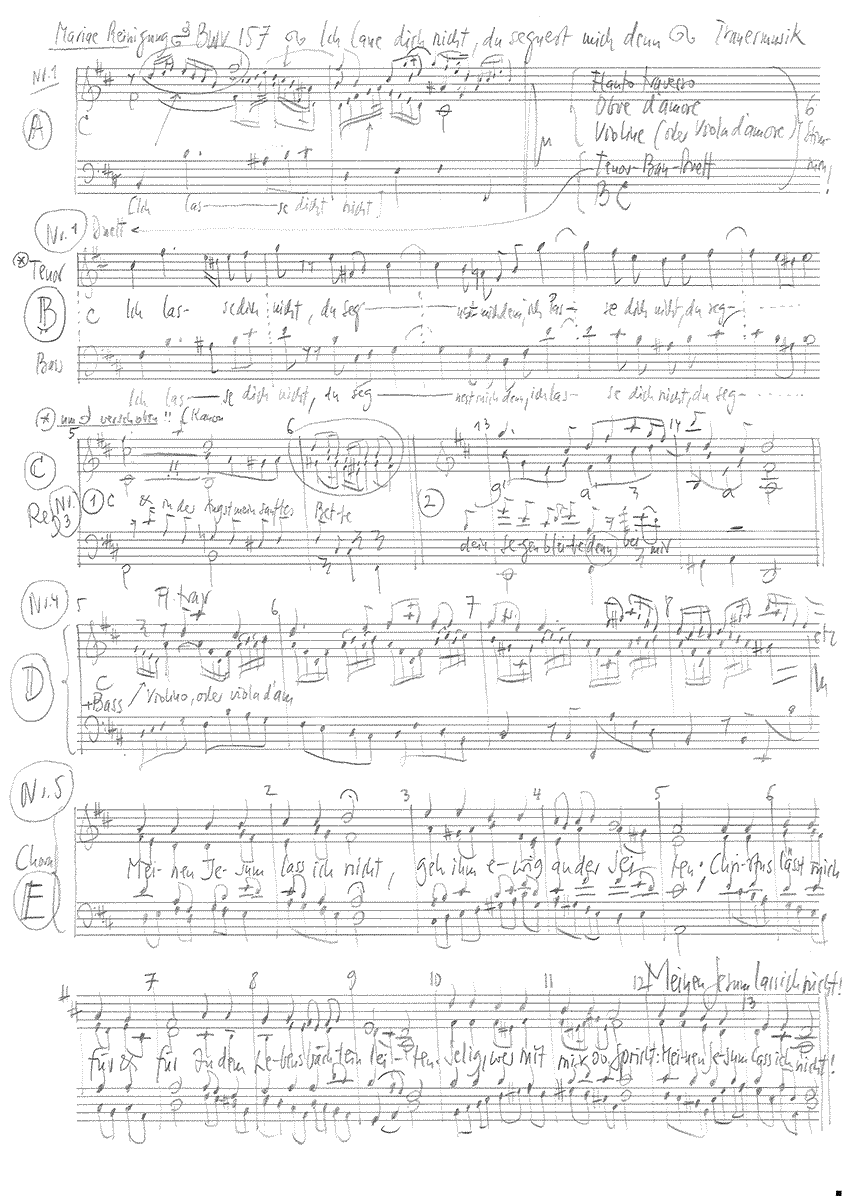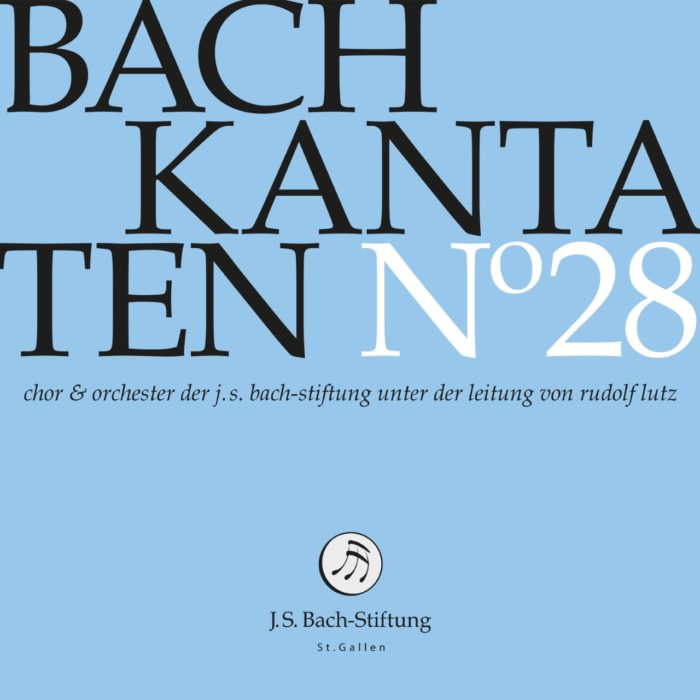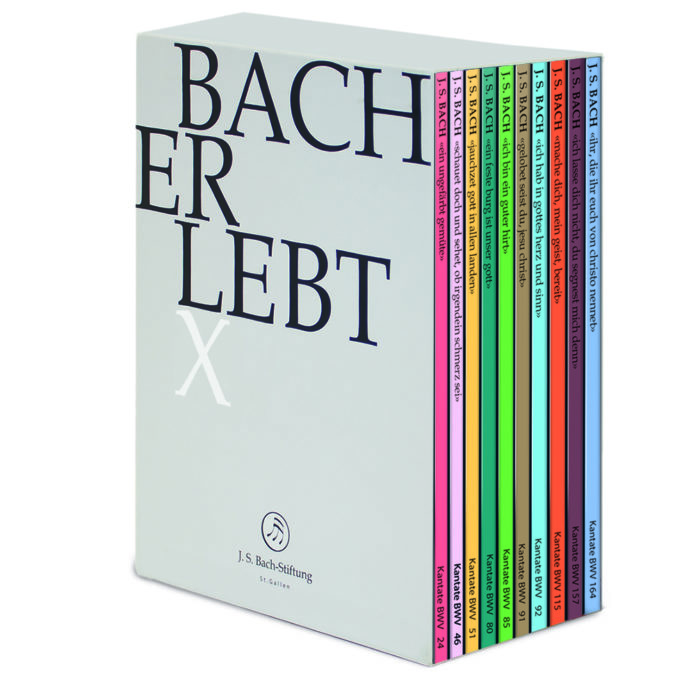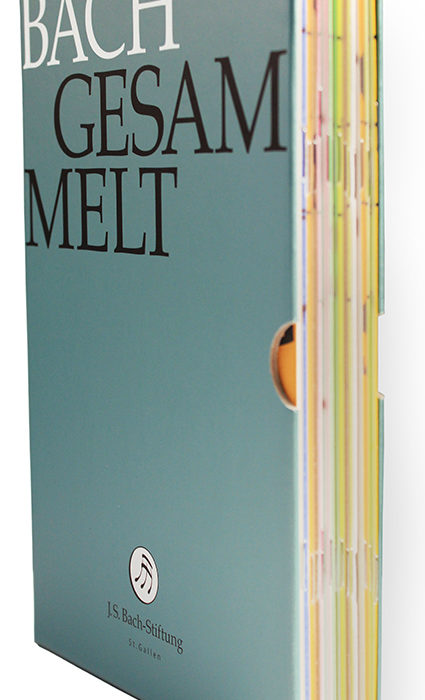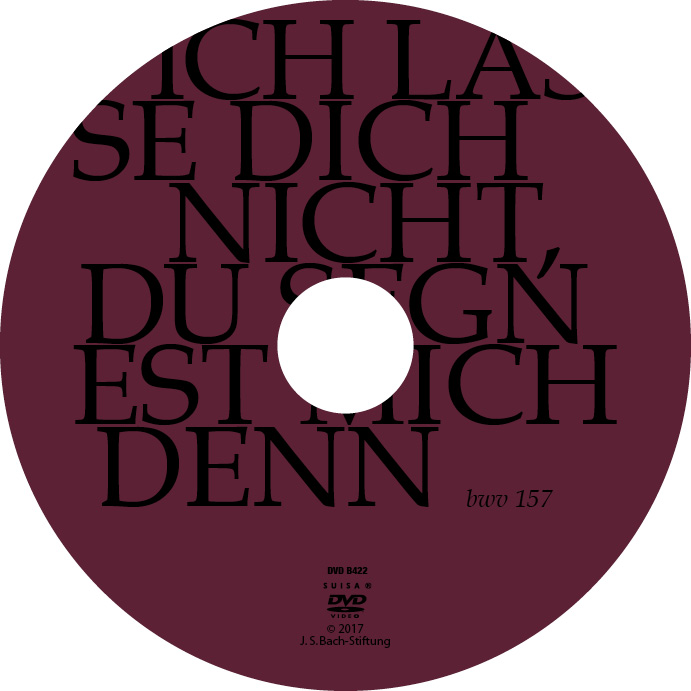Ich lasse dich nicht, du segnest mich denn
BWV 157 // For the Purification of the Blessed Virgin Mary
(I’ll not let thee go, thou must bless me first) for tenor and bass, vocal ensemble (closing chorale), transverse flute, oboe d’amore, strings and basso continuo

Would you like to enjoy our videos ad-free? Subscribe to YouTube Premium now...
Workshop
Reflective lecture
Choir
Soprano
Alexandra Rawohl
Orchestra
Conductor & cembalo
Rudolf Lutz
Violin
Renate Steinmann, Monika Baer
Viola
Susanna Hefti
Violoncello
Martin Zeller
Violone
Markus Bernhard
Oboe d’amore
Katharina Arfken
Bassoon
Susann Landert
Transverse flute
Marc Hantaï
Organ
Nicola Cumer
Musical director & conductor
Rudolf Lutz
Workshop
Participants
Karl Graf, Rudolf Lutz
Reflective lecture
Speaker
Fulbert Steffensky
Recording & editing
Recording date
17.11.2016
Recording location
Trogen AR (Schweiz) // Evangelische Kirche
Sound engineer
Stefan Ritzenthaler
Director
Meinrad Keel
Production manager
Johannes Widmer
Production
GALLUS MEDIA AG, Switzerland
Producer
J.S. Bach Foundation of St. Gallen, Switzerland
Librettist
Text No. 1
1. Gen. 32:26
Text No. 2–4
Christian Friedrich Henrici, known as Picander
Text No. 5
Christian Keymann (1658)
First performance
Funeral of Johann Christoph von Ponickau,
6 February 1727, Leipzig
In-depth analysis
Cantata BWV 157 was performed as the first half of the music for a memorial service held on 6 February 1727 for Johann Christoph von Ponickau, a chamberlain who had died a few months earlier. The cantata that followed the sermon, “Liebster Gott, vergißt du mich”, is generally assumed to be lost, and it is entirely possible that Bach was not the composer. Indeed, BWV 157 perhaps survived only because it was later revived, partly with new instrumentation, for the Purification of the Blessed Virgin Mary, work that may have been carried out by Bach’s student Christian Friedrich Penzel. Although the original composition cannot be reconstructed with full certainty, it is without doubt the most significant composition that had ever been performed in the small village church of Pomssen (near Leipzig) with its sonorous, early baroque organ.
Although the dictum of the opening movement is drawn from the parable of Jacob wrestling with God at Jabbok (1. Gen. 32:27), the narrative is presented in connection with Simeon’s patient wait for his redemptive meeting with the new-born Saviour and is thus placed in the context of death. To capture this mood, Bach composed an extremely tender vocal setting that opens with a trio of interweaving lines for three high-register instruments; the funeral-music scoring for viola d’amore, transverse flute and oboe d’amore perhaps sounded very distinctive compared to the more homogeneous instrumentation in the version for the Feast of the Purification. The close imitation and expressive motives of the trio create a sombre framework into which the bass and tenor duo is skilfully integrated. Throughout this touching duet, listeners need not look in the score to know that it is set in the haunting “Erbarme dich” (Lord have mercy) key of B minor.
The next movement of the cantata makes clear that the opening movement is not to be understood as an aria but as a setting of the old testament dictum for the select performance ensemble. As such, the next section is not a recitative but an actual aria whose text of “Ich halte meinen Jesum feste” (I shall hold to my Jesus firmly) may be seen as a personal endorsement of the work’s opening dictum and thus as a confession of faith of the honourable dedicatee, who, by trusting in the salvation of Jesus, may also be seen as a role model in matters of the spirit. The dark sonority of the oboe d’amore, whose muted timbre is created by its pear-shaped bell, is ideally complemented by the soloist’s long notes on the words “Ich halte” (I hold) as well as the cantabile phrases, which retain their noble composure despite the energetic expression of devotion (“mit Gewalt” – “with might”) to Jesus Christ.
In the tenor recitative, the accompanying strings lend the music a vibrant luminosity, making the listener reluctant to concede that this accompagnato development, despite its rather unusual closing phrase, was actually a later addition by Penzel, as Bach Scholar Klaus Hoffmann has suggested. The libretto, whose rich imagery portrays Jesus as a dependable authority in moments of mortal fear and spiritual crisis, is presented by the solo vocalist in a relaxed but elevated style rendering plausible the notion that a joyous relinquishing of life opens up a passage to a greater reality.
The bass soloist then responds with a further aria that resumes the cantata’s overarching trope of “festhalten” (holding firm); following the lamentations of the previous movements, the setting presses forward with unbridled joy. Propelled by a spirited continuo part, the sparkling transverse flute and violin passages evoke a vision of heavenly bliss and underscore the confident tone of the soloist. The two recitative-like passages provide for moments of still contemplation without impeding the believer’s decisive procession to the longed-for goal; in a moving adagio passage, the quavering funeral bells of an idealised “gentle death” accompany the dying believer to the “land so fair” of the eternal wedding feast.
As is fitting for an occasional composition written for an out-of-town performance with a limited number of musicians, the closing chorale is the only movement in which Bach employs a four-voice ensemble. The text of Christian Keymann’s concise hymn verse of 1658 “Meinen Jesum lass ich nicht” (This my Jesus I’ll not leave) forms the perfect complement to a cantata whose libretto revolves around faith unto death and the blessing obtained through overcoming spiritual crises. After the pained B minor of the opening movement, the D major tonality of this chorale sounds as vibrant and clear as the invigorating “Lebensbächlein” (springs of life) described in the hymn.
Libretto
1. Duett (Tenor, Bass)
»Ich lasse dich nicht, du segnest mich denn!«
2. Arie (Tenor)
Ich halte meinen Jesum feste,
ich laß ihn nun und ewig nicht.
Er ist allein mein Aufenthalt,
drum faßt mein Glaube mit Gewalt
sein segenreiches Angesicht,
denn dieser Trost ist doch der beste,
ich halte meinen Jesum feste.
3. Rezitativ (Tenor)
Mein lieber Jesu du,
wenn ich Verdruß und Kummer leide,
so bist du meine Freude,
in Unruh meine Ruh
und in der Angst mein sanftes Bette;
die falsche Welt ist nicht getreu,
der Himmel muß veralten,
die Lust der Welt vergeht wie Spreu;
wenn ich dich nicht, mein Jesu, hätte,
an wen sollt ich mich sonsten halten?
Drum laß ich nimmermehr von dir,
dein Segen bleibe denn bei mir.
4. Arie, Rezitativ und Arioso (Bass)
Ja, ja, ich halte Jesum feste,
so geh ich auch zum Himmel ein,
wo Gott und seines Lammes Gäste
in Kronen zu der Hochzeit sein.
Da laß ich nicht, mein Heil, von dir,
da bleibt dein Segen auch bei mir.
Ei, wie vergnügt
ist mir mein Sterbekasten,
weil Jesus mir in Armen liegt!
So kann mein Geist recht freudig rasten!
Ja, ja, ich halte Jesum feste,
so geh ich auch zum Himmel ein!
O schöner Ort!
Komm, sanfter Tod, und führ mich fort,
wo Gott und seines Lammes Gäste
in Kronen zu der Hochzeit sein.
Ich bin erfreut,
das Elend dieser Zeit
noch von mir heute abzulegen;
denn Jesus wartet mein im Himmel mit dem Segen.
5. Choral
Meinen Jesum laß ich nicht,
geh ihm ewig an der Seiten;
Christus läßt mich für und für
zu dem Lebensbächlein leiten.
Selig, wer mit mir so spricht:
Meinen Jesum laß ich nicht.



